Last updated: July 5, 2018
Article
Bees of the North Coast & Cascades
Bees are some of the most abundant and important pollinators in the world – especially in mountainous environments. Despite the importance of bees in our natural environments, many national parks do not know what species are in their parks. In 2016, to celebrate the Centennial of the National Park Service, North Coast and Cascades National Parks focused on pollinators. The inventories we initiated at that time are just a beginning; you can continue our quest to learn more about bees by uploading your photos to inaturalist.org.
| Species | Common name | Sociality/nesting | EBLA | FOVA | LEWI | MORA | NOCA | OLYM | SAJH |
|---|---|---|---|---|---|---|---|---|---|
| Andrena columbiana | Mining bee | Solitary; belowground nest | x | ||||||
| Andrena knuthiana | Mining bee | Solitary; belowground nest | x | ||||||
| Andrena thaspii | Mining bee | Solitary; belowground nest | x | ||||||
| Andrena trevoris | Mining bee | Solitary; belowground nest | x | ||||||
| Andrena vicinoides | Mining bee | Solitary; belowground nest | x | ||||||
| Andrena washingtoni | Mining bee | Solitary; belowground nest | x | ||||||
| Andrena w-scripta | Mining bee | Solitary; belowground nest | x | ||||||
| Panurginus atriceps | Mining bee | Solitary; belowground nest | x | x | |||||
| Panurginus ineptus | Mining bee | Solitary; belowground nest | x | x |
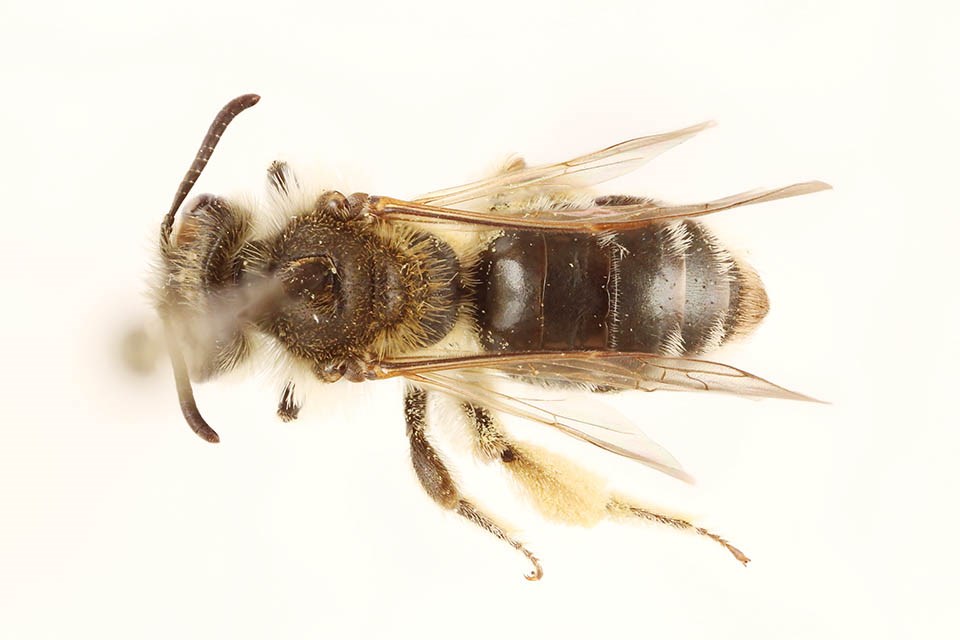
NPS / Jessica Rykken
| Species | Common name | Sociality/ |
EBLA | FOVA | LEWI | MORA | NOCA | OLYM | SAJH |
|---|---|---|---|---|---|---|---|---|---|
| Apis mellifera* | Honey bee | Social; hive | x | x | |||||
| Bombus appositus | White-shouldered bumble bee | Social; belowground/ |
x | x | x | x | x | ||
| Bombus bifarius | Two form bumble bee | Social; belowground nest | x | x | x | x | |||
| Bombus caliginosus | Obscure bumble bee | Social; above/ |
x | x | x | ||||
| Bombus fervidus | California bumble bee | Social; aboveground/ |
x | x | x | ||||
| Bombus flavidus | Fernald cuckoo bumble bee | Social parasite | x | x | |||||
| Bombus flavifrons | Yellow-fronted bumble bee | Social; belowground nest | x | x | x | x | x | x | |
| Bombus griseocollis | Brown-belted bumble bee | Social; belowground/ |
x | ||||||
| Bombus insularis | Indicscrim |
Social parasite | x | ||||||
| Bombus melanopygus | Black tail bumble bee | Social; above/ |
x | x | x | ||||
| Bombus mixtus | Fuzzy-horned bumble bee | Social; surface or above/ |
x | x | x | x | x | ||
| Bombus nevadensis | Nevada bumble bee | Social; belowground nest | x | ||||||
| Bombus occidentalis | Western bumble bee | Social; belowground nest | x | ||||||
| Bombus rufocinctus | Red-belted bumble bee | Social; aboveground/ |
x | x | x | x | |||
| Bombus sitkensis | Sitka bumble bee | Social; belowground nest | x | x | x | ||||
| Bombus sylvicola | Forest bumble bee | Social; belowground nest | x | x | x | ||||
| Bombus vandykei | van Dyke bumble bee | Social; belowground nest | x | x | |||||
| Bombus vosnesenskii | Vosnesensky bumble bee | Social; belowground nest | x | x | x | x | x | ||
| Diadasia diminuta | Chimney bee | Solitary/ |
x | ||||||
| Melissodes sp. | Long-horned bee | Solitary; ground nest | x | ||||||
| Nomada sp. | Cuckoo bee | Kleptoparasite | x | x | |||||
| Ceratina acantha | Prickly ceratina | Subsocial; belowground nest | x |
EBLA = Ebey’s Landing National Historical Reserve; FOVA = Fort Vancouver National Historic Site; LEWI = Lewis and Clark National Historical Park; MORA = Mount Rainier National Park; NOCA = North Cascades National Park Complex; OLYM = Olympic National Park; SAJH = San Juan Island National Historical Park.
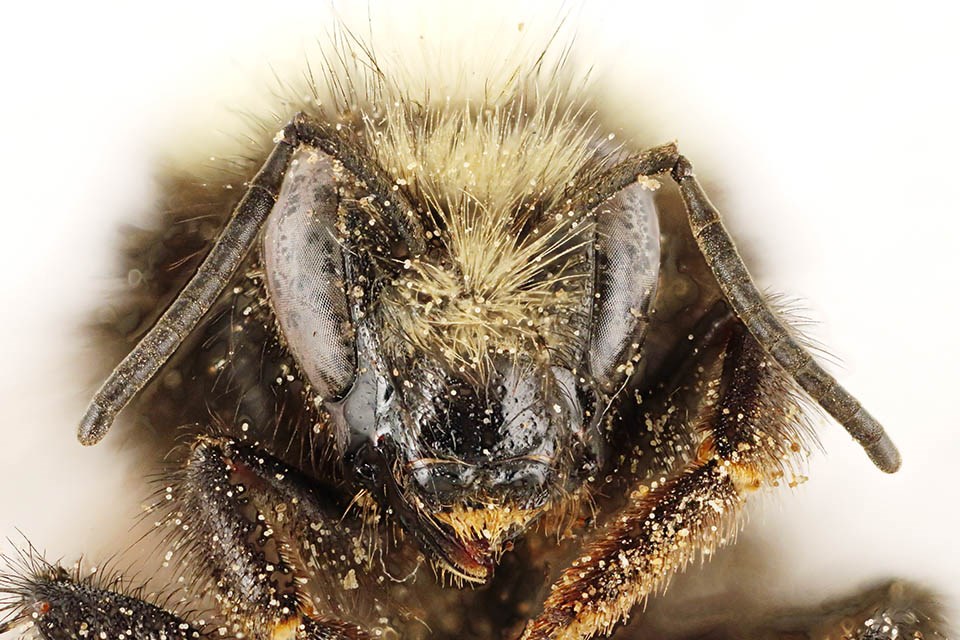
NPS / Jessica Rykken
| Species | Common name | Sociality/nesting | EBLA | FOVA | LEWI | MORA | NOCA | OLYM | SAJH |
|---|---|---|---|---|---|---|---|---|---|
| Colletes nigrifrons | Polyester bee | Solitary; belowground nest | x | ||||||
| Colletes consors | Polyester bee | Solitary; belowground nest | x | ||||||
| Hylaeus annulatus | Masked bee | Solitary; pithy stems | x | x | |||||
| Hylaeus coloradensis | Masked bee | Solitary; pithy stems | x | ||||||
| Hylaeus episcopalis | Masked bee | Solitary; pithy stems | x | ||||||
| Hylaeus modestus | Masked bee | Solitary; pithy stems | x | x | |||||
| Hylaeus nevadensis | Masked bee | Solitary; pithy stems | x | ||||||
| Hylaeus wootoni | Masked bee | Solitary; pithy stems | x | x |
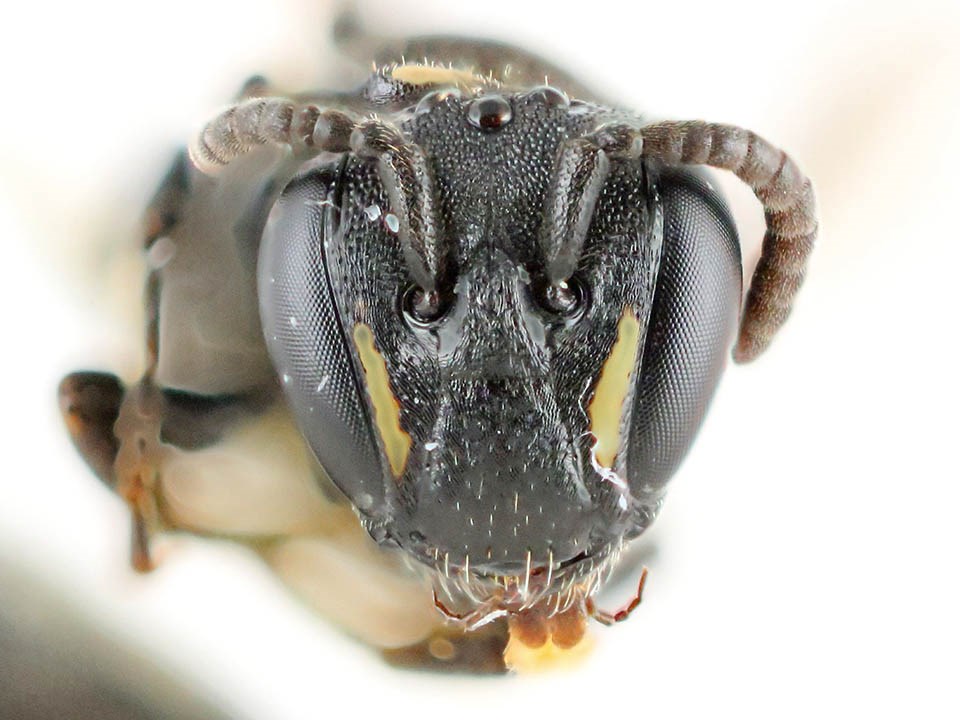
NPS / Jessica Rykken
| Species | Common name | Sociality/nesting | EBLA | FOVA | LEWI | MORA | NOCA | OLYM | SAJH |
|---|---|---|---|---|---|---|---|---|---|
| Agapostemon virescens | Sweat bee | Solitary; belowground nest | x | ||||||
| Halictus confusus | Sweat bee | Social; belowground nest | x | x | |||||
| Halictus rubicundus | Sweat bee | Social; belowground nest | x | x | |||||
| Halictus virgatellus | Sweat bee | Social; belowground nest | x | x | |||||
| Lasioglossum anhypops | Sweat bee | Solitary; belowground nest | x | ||||||
| Lasioglossum colatum | Sweat bee | Solitary; belowground nest | x | ||||||
| Lasioglossum egregium | Sweat bee | Solitary; belowground nest | x | ||||||
| Lasioglossum nigroviride | Sweat bee | Social; belowground nest | x | ||||||
| Lasioglossum ruidosense | Sweat bee | Social; belowground nest | x | ||||||
| Lasioglossum sisymbrii | Sweat bee | Solitary; belowground nest | x | ||||||
| Lasioglossum trizonatum | Sweat bee | Solitary; belowground nest | x | ||||||
| Lasioglossum zonulum* | Sweat bee | Solitary; belowground nest | x | ||||||
| Sphecodes sp. | Cuckoo bee | Kleptoparasite | x | x | |||||
| Dufourea campanulae | Sweat bee | Solitary; belowground nest | x | ||||||
| Dufourea maura | Sweat bee | Solitary; belowground nest | x |
EBLA = Ebey’s Landing National Historical Reserve; FOVA = Fort Vancouver National Historic Site; LEWI = Lewis and Clark National Historical Park; MORA = Mount Rainier National Park; NOCA = North Cascades National Park Complex; OLYM = Olympic National Park; SAJH = San Juan Island National Historical Park.
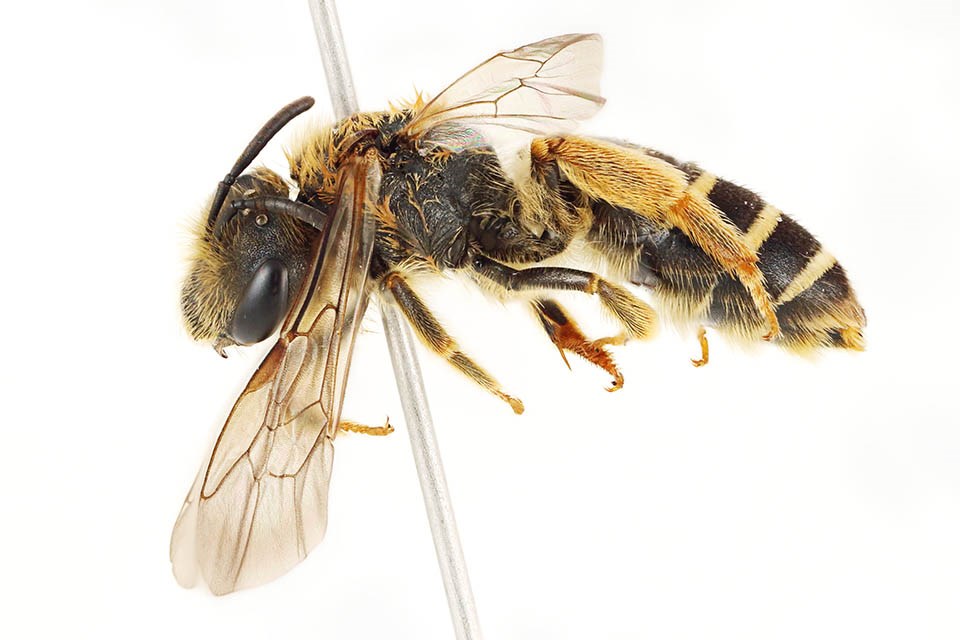
NPS / Jessica Rykken
| Species | Common name | Sociality/nesting | EBLA | FOVA | LEWI | MORA | NOCA | OLYM | SAJH |
|---|---|---|---|---|---|---|---|---|---|
| Anthidium tenuiflorae | Wool carder bee | Solitary; belowground cavity lined with plant hair | x | ||||||
| Coelioxys rufitarsis | Cuckoo bee | Kleptoparasite | x | ||||||
| Coelioxys sodalis | Cuckoo bee | Kleptoparasite | x | ||||||
| Hoplitis fulgida fulgida | Mason bee | Solitary; cavity nest | x | ||||||
| Megachile melanophaea | Leafcutter bee | Solitary; belowground cavity | x | ||||||
| Megachile perihirta | Leafcutter bee | Solitary; belowground cavity | x | x | |||||
| Megachile relativa | Leafcutter bee | Solitary; wood cavity | x | x | |||||
| Osmia coloradensis | Mason bee | Solitary; wood/stem cavity | x | ||||||
| Osmia densa | Mason bee | Solitary; wood cavity | x | x | |||||
| Osmia dolerosa | Mason bee | Solitary; wood cavity | x | x | |||||
| Osmia paradisica | Mason bee | Solitary; ?ground cavity | x | ||||||
| Osmia penstemonis | Mason bee | Solitary; stem cavity | x | ||||||
| Osmia pusilla | Mason bee | Solitary; wood/stem cavity | x | x | |||||
| Osmia simillima | Mason bee | Solitary; galls, wood cavity | x | ||||||
| Osmia subaustralis | Mason bee | Solitary; wood cavity | x | ||||||
| Osmia tristella | Mason bee | Solitary; wood/stem cavity | x | x | |||||
| Stelis sp. | Cuckoo bee | Kleptoparasite | x |
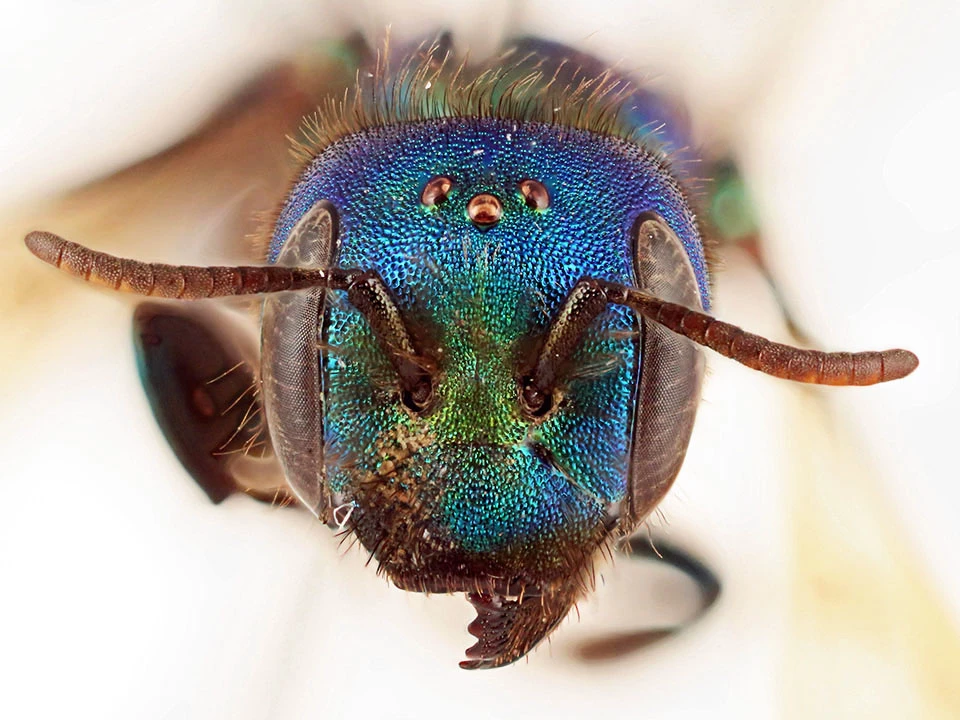
NPS / Jessica Rykken
